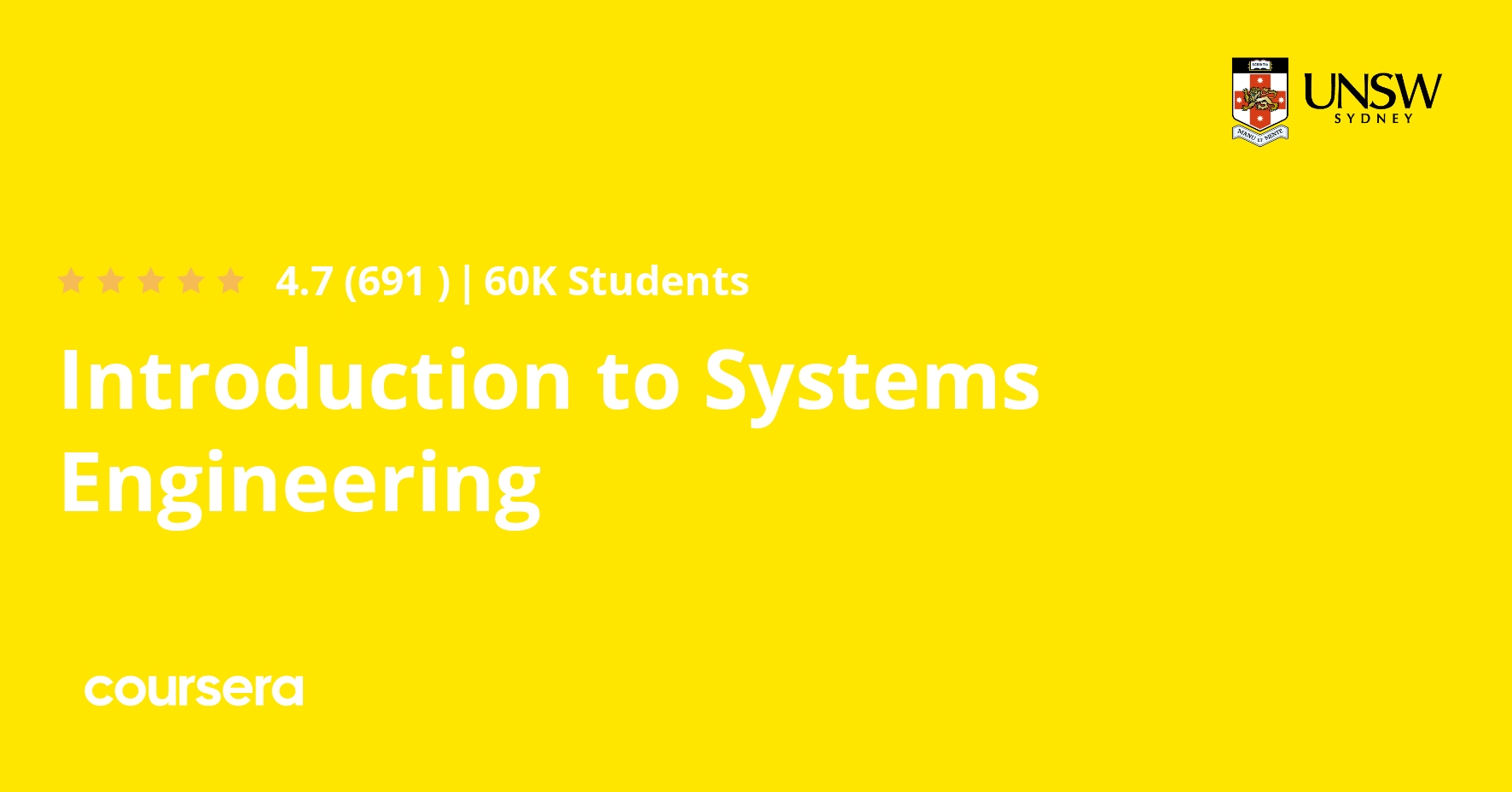Description
“Introduction to Systems Engineering” uses a structured yet flexible approach to provide a holistic, solid foundation to the successful development of complicated systems.
The course takes you step by step through the system life cycle, from design to development, production and management. You will learn how the different components of a system interrelate, and how each contributes to a project’s goals and success.
The discipline’s terminology, which can so often confuse the newcomer, is presented in an easily digestible form. Weekly video lectures introduce and synthesise key concepts, which are then reinforced with quizzes and practical exercises to help you measure your learning.
This course welcomes anyone who wants to find out how complex systems can be developed and implemented successfully. It is relevant to anyone in project management, engineering, QA, logistic support, operations, management, maintenance and other work areas. No specific background is required, and we welcome learners with all levels of interest and experience.
What you will learn
Course Welcome & Module 1 (Introduction to Systems and System Life Cycle)
Welcome to ‘Introduction to Systems Engineering’! To help you in getting started with this course, we have a course introduction video that will provide you with an overview of the course syllabus.We then begin the course with this introductory module in which we address the nature of systems and the concept of a system life cycle. We identify what is meant when we say that something is a system and we narrow down the very broad definitions to focus on the human-made or modified systems that are our focus in systems engineering. We then look at the broad phases and activities that a system moves through during its life cycle, from early identification of the need for the system, exploration of options, functional design, physical design, detailed design and development, construction and production, utilization and support and then, finally, retirement. To provide greater detail for this module, we recommend (but do not require) that students refer to pages 1-19 of our textbook “Systems Engineering Practice”–see reading on Course Notes and Text Books.
Systems Engineering and its Relevance and Benefits
In this module, we describe the discipline of systems engineering and outline its relevance and benefits. We introduce what we mean by the ‘systems engineering’ and provide a framework within which we can consider the major processes, activities, and artefacts throughout the remainder of the course. In doing so, it will have become evident to you that the systems engineering approach has a number of advantages, so we then examine in a little more detail the relevance and benefits of systems engineering.To provide greater detail for this module, we recommend (but do not require) that students refer to pages 19-31 of our textbook “Systems Engineering Practice”–see reading on Course Notes and Text Books.
Needs and Requirements
Before we look at the various systems engineering activities in more detail in forthcoming modules, in this module we look at what we mean when we refer to the ‘needs’ and ‘requirements’ for a system. We examine the needs and requirements views developed by business management, business operations, and systems designers. We will also consider in this module how we might go about developing a set of requirements—we call that process ‘requirements engineering’. To provide greater detail for this module, we recommend (but do not require) that students refer to pages 43-54 of our textbook “Systems Engineering Practice”–see reading on Course Notes and Text Books.
Requirements Elicitation and Elaboration
In this module, we explore requirements engineering and the processes by which requirements are elicited and defined formally through a process called elaboration (which involves derivation and decomposition of lower-level requirements from their parent requirements). We also look in this module at some simple requirements engineering tools and illustrate how they might be useful to you. Finally, we examine the notion of traceability, which ensures that we know where each requirement comes from, what requirements are related to it, and what requirements were derived from it. At the end of this module, you should be prepared to attempt the mid-course exam. To provide greater detail for this module, we recommend (but do not require) that students refer to pages 54-73 of our textbook “Systems Engineering Practice”–see reading on Course Notes and Text Books.





